The following essay is based on a speech, my first public speech about Alexander Hamilton, given on July 28, 2013, at the New Windsor Cantonment in conjunction with the Alexander Hamilton Awareness Society. It is reproduced below after some editing and links added to the relevant sources. An inquiry by Dianne Durante, who is writing a series of blog posts linking primary sources to lyrics in Hamilton: An American Musical, reminded me of this speech and I was prevailed upon to make it available to others researching this important topic.
The Newburgh Conspiracy
Throughout the War for Independence, Congress and the various states were unable or unwilling to provide for the army. The soldiers often went without clothing, without food, and without pay. Some in the Continental Congress wanted to do justice for the men who sacrificed so much for their countrymen, but the national government lacked the power of taxation and therefore never had enough money to provide for the soldiers.
Upset at the neglect of them and fearing that the end of the war would mean being sent home without receiving what was owed to them, army discontent rose. Mutinies were common. Many soldiers talked of refusing to disband after peace was declared and some threatened to revolt against Congress.
General Washington sympathized with his men. A look through his writings reveals that much of his correspondence dealt not with military matters but with the inability of the continental and state governments to properly provide for the army. Despite this, Washington believed strongly in civilian control of the army.
In March 1783, an anonymous “Address to the Officers” circulated through the army camp at Newburgh. It called for a meeting to discuss the the demands of the soldiers and decide how to pursue their rightful claims. Fearing a mutiny or a coup against himself or Congress, Washington canceled the unauthorized meeting and called one of his own. At Washington’s meeting, which took place right here [at the New Windsor Cantonment], Washington pledged to do all he could to help the men of the army and urged them to be patient. Washington was at his best. He begged the assembled crowd, “Gentlemen, you will permit me to put on my spectacles, for I have not only grown gray, but almost blind in the service of my country.” Upon hearing these words and recognizing the sacrifice General Washington made for his country and fellow Americans, many officers were brought to tears and the so-called Newburgh Conspiracy evaporated.
Hamilton advising Washington
By early 1783, Washington and Hamilton had not written to each other for over a year. In February, Hamilton broke the silence, providing his former boss with valuable information regarding the growing unrest in the army, of which the Commander-in-Chief was not aware. Hamilton then advised Washington:
The claims of the army urged with moderation, but with firmness, may operate on those weak minds which are influenced by their apprehensions more than their judgments; so as to produce a concurrence in the measures which the exigencies of affairs demand. They may add weight to the applications of Congress to the several states… But the difficulty will be to keep a complaining and suffering army within the bounds of moderation. This Your Excellency’s influence must effect. In order to it, it will be adviseable not to discountenance their endeavours to procure redress, but rather by the intervention of confidential and prudent persons, to take the direction of them… Your Excellency should preserve the confidence of the army without losing that of the people. This will enable you in case of extremity to guide the torrent, and bring order perhaps even good, out of confusion.
Hamilton as a conspirator?
Some believe that Hamilton encouraged mutinous behavior in the army to pressure Congress into establishing funds for the continental government. For example, Ron Chernow writes, “Hamilton was coaxing Washington to dabble in a dangerous game of pretending to be a lofty statesman while covertly orchestrating pressure on Congress. The letter shows Hamilton at his most devious, playing with combustible forces.” (Chernow, Alexander Hamilton 177.)
But Washington did not see things this way. Replying to Hamilton, Washington wrote that he was “pursuing the suggestions of your letter, which I am happy to find coincides with my own practice for several months past, & which was the means of directing the business of the Army into the Channel it now is, leaves me under no great apprehension of its exceeding the bounds of reason & moderation, nothwithstanding the prevailing sentiment in the Army is, that the prospect of compensation for past Services will terminate with the War.”
Thus, according to Washington, he and Hamilton were in complete agreement about the course to follow: pushing for a funding system and trying to keep the anger of the army within “the bounds of reason & moderation.”
On March 12, Washington again wrote to Alexander Hamilton:
After the arrival of a certain Gentleman, who shall be nameless at present, from Philadelphia, a storm very suddenly arose with unfavourable prognostics… There is something very misterious in this business. It appears, reports have been propagated in Philadelphia, that dangerous combinations were forming in the Army; and this at a time when there was not a syllable of the kind in agitation in Camp… From this, and a variety of other considerations, it is firmly believed, by some, the scheme was not only planned but also digested and matured in Philadelphia; but in my opinion shall be suspended till I have a better ground to found one on.
Was there a conspiracy originating in Philadelphia? If so, Washington refused to believe it without further evidence. Was Hamilton a conspirator? If so, Washington did not say so. Rather, Washington asked Hamilton to continue on the same course he had been pursuing so far.
Let me beseech you therefore, my good Sir, to urge this matter earnestly, and without further delay… To prevail on the Delegates of those States through whose means these difficulties occur, it may, in my opinion, with propriety be suggested to them, if any disastrous consequences should follow, by reason of their delinquency, that they must be answerable to God & their Country for the ineffable horrors which may be occasioned thereby.
So who is Washington blaming for the ineffable horrors that may result? Definitely not Hamilton. In fact, he relied on Hamilton to “urge this matter earnestly.” Instead, Washington blamed “the Delegates of those States through whose means these difficulties occur.”
Upon receiving this letter, Hamilton replied, “I am happy to find You coincide in opinion with me on the conduct proper to be observed by yourself. I am persuaded more and more it is that which is most consistent with your own reputation and the public safety.” Yet again, Hamilton and Washington were in complete agreement and were working together to prevent “dangerous combinations.”
For the next month, Hamilton and Washington corresponded about how to promote the funding system and keep the army in check.
On April 4, Washington wrote to Hamilton, “Some men (& leading ones too) in this Army, are beginning to entertain suspicions that Congress, or some members of it” were using them “as mere Puppits to establish Continental funds.” Washington warned Hamilton “that the Army…is a dangerous instrument to play with.” The critics cite this as proof that Washington was disappointed with Hamilton’s playing with the army to promote a stronger national government. As Ron Chernow comments, “Washington must have seen that Hamilton, for all his brains and daring, sometimes lacked judgment and had to be supervised carefully” (Chernow, Alexander Hamilton 179-180).
But Washington had not accused Hamilton of playing with the army. Washington wrote his warning generally and never implied that Hamilton was one of those men under suspicion. In fact, in that letter, Washington called out “the Financier,” Robert Morris, as the one “suspected to be at the bottom of this scheme.” He made no mention of Hamilton being involved in any way.
Less than two weeks later (April 16), George Washington apologized to Alexander Hamilton: “My last letter to you was written in a hurry, when I was fatigued… possibly, I did not on that occasion express myself (in what I intended as a hint) with so much perspicuity as I ought—possibly too, what I then dropped, might have conveyed more than I intended; for I do not, at this time, recollect the force of my expression.” Washington then noted, “To Mr. Morris…or rather to Mr. G[ouverneur] M[orris] is ascribed, in a great degree, the ground work of the superstructure which was intended to be raised in the Army by the Anonymous Addresser.” Yet again, Washington did not accuse Hamilton of being involved in this conspiracy nor did he say that others had mentioned him as a conspirator. Rather, it was Gouverneur Morris who stood accused of egging on the discontented. But this accusation against Morris came not from Washington himself but from the very men who had threatened a mutiny against Washington and an overthrow of Congress and who now argued that they had been used as “Puppits.” Perhaps Morris had indeed encouraged these men. Or perhaps these men were now trying to shift the blame in an attempt to exonerate themselves.
At this point, there is no evidence Hamilton was involved in any conspiracy. Some members of Congress had been accused of using the army as “Puppits,” but those were unsubstantiated accusations and only Robert Morris and Gouvernour Morris had been named as possible conspirators. No one pointed a finger at Hamilton.
Historiography: 1820
In 1820, a man going by the name of John Montgars, who claimed to have “been employed, for several years, upon a history of the United States,” was now looking into the Newburgh Conspiracy. Montgars wrote that “a letter was received by the Commander-in-Chief from a Mr. Hardy [later changed to a Mr. Harvie], of Virginia, then a member of Congress, advising him that a conspiracy of the very worst character, having for object the demolition of our free constitutions, and the destruction of the General’s authority, was in embryo, and would soon show itself in some overt act; and that Robert and Gouverneur Morris and Alexander Hamilton, &c, were at the bottom of the plan.”
Here we have the first accusation against Hamilton of not only encouraging a conspiracy to overthrow Washington and the civilian government but that he was “at the bottom of the plan.” Yet again, the two Morrises also stood accused of being “at the bottom of the plan” alongside Hamilton.
Who was this John Montgars? Was he a trustworthy, non-biased historian, as he claimed? And what was the source for his information?
It turns out that Montgars invented this story, or at the least he never provided any evidence in support of it. Timothy Pickering, Nicholas Fish, John Brooks, David Cobb, Ebenezer Huntington, James Thacher, and others all said that they were eyewitness to the events that day or talked to those who had been and that Washington received no such letter from a Hardy, Harvie, or anyone else implicating Hamilton and the Morrises.
Furthermore, it just so happens that this John Montgars was none other than John Armstrong. (Montgars is an anagram for Armstrong, except one “r” has been dropped.) Armstrong had been one the worst offenders in the Newburgh Conspiracy. He had written the anonymous “Address to the Officers,” though he denied it for decades, leading a number of historians to believe that someone else, possibly Gouverneur Morris, had been the author. Armstrong had also been an aide to Major General Horatio Gates, an old rival of Washington who had falsely accused Hamilton in 1777 of stealing a letter he had received from Thomas Conway attacking Washington. It was Gates who would have probably become commander-in-chief had Washington been overthrown or forced to resign. Thus, the long-lasting enmity between Gates and Armstrong on one side and Hamilton and Washington on the other reappeared during the Newburgh Conspiracy. Armstrong renewed this rivalry in 1820 as he tried to change the narrative of the affair in which he was involved.
With Montgars’s identity revealed and his account refuted by other eyewitnesses, there is good reason to believe that the Newburgh conspirators, including Armstrong, were merely trying to shift the blame off themselves and onto Washington’s supporters—i.e., Hamilton and the Morrises. Certainly, their accusations against Hamilton and others remain meager and unsubstantiated.
Historiography: 1970
That is how things stood for the next 150 years. John Armstrong was known as the author of the “Address to the Officers” and one of the leaders of the conspiracy. The idea that Hamilton and the Morrises were involved in the Newburgh Conspiracy was occasionally mentioned, but was not believed by most because the evidence was meager and unreliable. Just read any Hamilton biography written prior to 1970. Few, if any, mention Hamilton’s involvement in any sort of conspiracy. In fact, the term “Newburgh Conspiracy” was rarely used in Hamilton bios prior to 1970. Thus, up until 1970, for all intents and purposes, Hamilton had no role in the Newburgh Conspiracy and was not only completely innocent, but was often commended for being a great help to Washington in preventing a disaster by warning him and providing him with solid advice.
Then, in 1970, Richard Kohn wrote an essay called “The Inside History of the Newburgh Conspiracy.” In this essay, Kohn argued that Hamilton and the Morrises organized the Newburgh Conspiracy. Ever since, this version of history has become mainstream and Kohn’s essay is cited by nearly all who write on this subject.
The essay is too long (34 pages) and complex to quote here in full or to provide the relevant excerpts. I thoroughly encourage you to read Kohn’s essay and decide for yourself whether Hamilton was culpable. But I will give you a few short quotes from the essay to give you the gist of Kohn’s argument.
“This is speculation.”
“My speculation.”
“could imply”
“imply to me”
“does not imply.”
“in no way implies.”
“There is no direct evidence”
“circumstantial evidence”
“The evidence…is circumstantial.”
“The evidence cited, as I admitted, was circumstantial.”
“The exact nature of the group and its plans will probably never be known.”
“no proof”
“strong hints.”
“an educated guess.”
“cannot be gauged with certainty.”
There you have it! The argument that Hamilton was a leading participant in the Newburgh Conspiracy is based on speculation, implications, circumstantial evidence, and hints.
Even Richard Kohn admitted that he cannot prove his case because this conspiracy was “an event that never even happened, using evidence that probably never existed, or was immediately destroyed.”
(Richard Kohn followed up his 1970 essay with another in 1974, coauthored by C. Edward Skeen, entitled “The Newburgh Conspiracy Reconsidered” and repeated the same arguments in a 1975 book, Eagle and Sword: The Beginnings of the Military Establishment in America.)
Hamilton as a Hero
Although John Armstrong, Richard Kohn, and their historical heirs accuse Hamilton of being involved in the Newburgh Conspiracy, there are a number of facts that are known with certainty that shows Hamilton to be blameless and even deserving of credit. We know that Hamilton forewarned Washington. We know that Washington and Hamilton were in agreement on the course to pursue. We know that Washington followed Hamilton’s advice. We know that Washington encouraged Hamilton to continue on the same course he had been pursuing in Congress. We know that Hamilton and the two Morrises became leading advisers to Washington after the conspiracy had ended, which Washington would not have done if he believed they encouraged a conspiracy to overthrow the civilian government and replace it with a military one.
As the man to warn and advise Washington, as one who fought for truth and justice throughout the affair, Hamilton deserved the utmost credit, second only to Washington for his role in quelling this conspiracy.
It is a real shame that Alexander Hamilton has been portrayed by so many biographers and historians as a villain or as an unsuspecting contributor to the Newburgh Conspiracy when, in reality, he was one of the heroes who helped Washington save the infant United States of America from impending collapse.







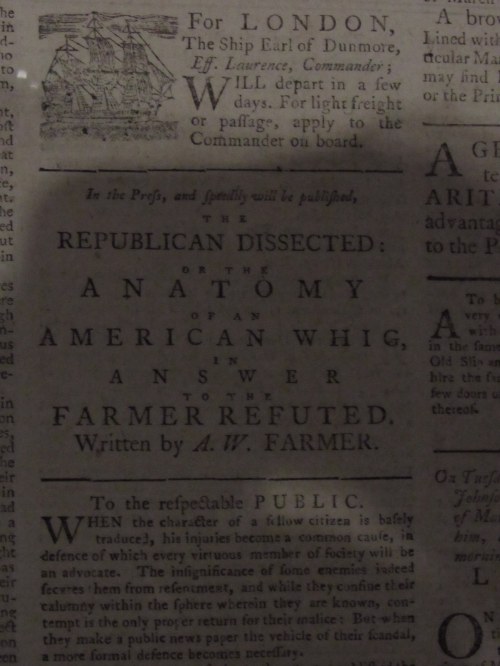








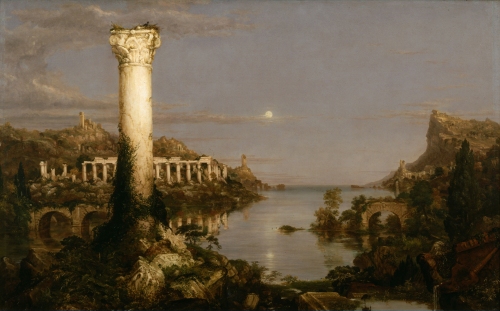


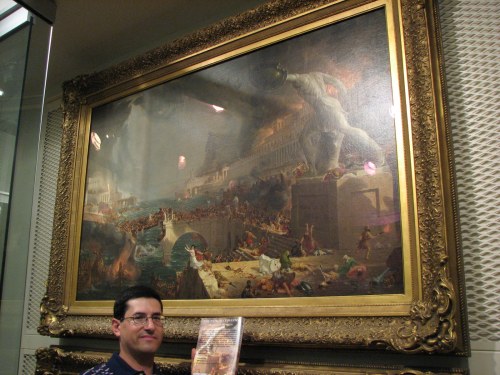





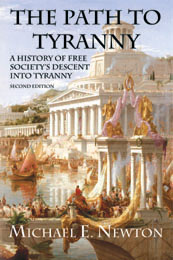
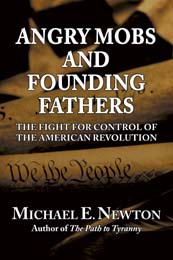
You must be logged in to post a comment.